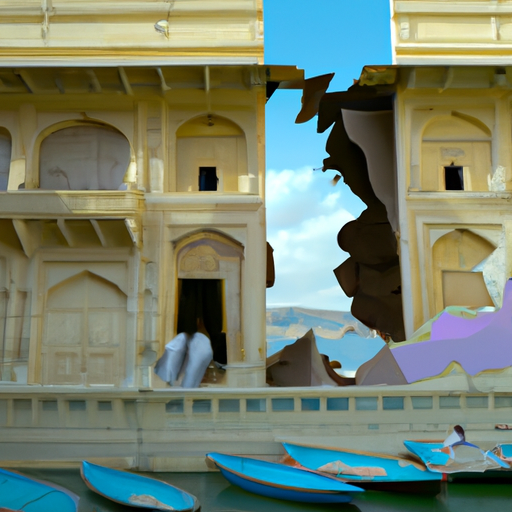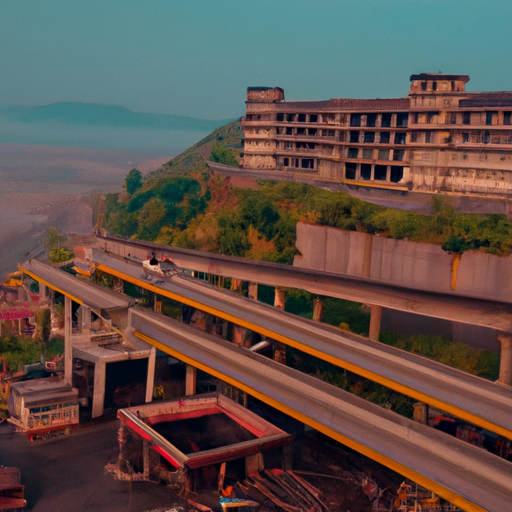
The Growth of Cruise Tourism in India: Opportunities and Challenges
India, with its vast coastline and rich cultural heritage, has immense potential for the growth of cruise tourism. In recent years, there has been a significant increase in the number of tourists opting for cruise vacations, and this trend is expected to continue in the coming years. However, like any other industry, cruise tourism in India also faces its fair share of opportunities and challenges.
One of the major opportunities for the growth of cruise tourism in India is the country’s diverse and picturesque coastline. From the pristine beaches of Goa to the backwaters of Kerala, there are numerous destinations that can attract cruise tourists. The Andaman and Nicobar Islands, with their crystal-clear waters and coral reefs, are also emerging as a popular cruise destination. Moreover, India’s rich cultural heritage, with its ancient temples, palaces, and historical sites, adds another dimension to the cruise experience.
Another opportunity lies in the increasing disposable income and changing lifestyles of the Indian middle class. As more and more people are willing to spend on leisure activities, the demand for cruise vacations is expected to rise. This presents a huge market for cruise operators to tap into and cater to the needs of this growing segment.
However, along with these opportunities, there are also several challenges that need to be addressed for the sustainable growth of cruise tourism in India. One of the major challenges is the lack of adequate infrastructure. India currently has only a few ports that are equipped to handle cruise ships. This limits the number of destinations that can be included in cruise itineraries. To overcome this challenge, there is a need for investment in port infrastructure and the development of new cruise terminals.
Another challenge is the lack of awareness and promotion of cruise tourism in India. Many potential tourists are unaware of the options available and the benefits of choosing a cruise vacation. There is a need for targeted marketing campaigns and promotional activities to create awareness and generate interest among potential tourists. Collaborations with travel agents and tour operators can also help in reaching out to a wider audience.
Furthermore, there is a need for trained manpower to cater to the needs of cruise tourists. From hospitality staff to tour guides, there is a requirement for skilled professionals who can provide a high level of service. Training programs and courses can be conducted to develop the necessary skills and expertise in the hospitality and tourism industry.
In conclusion, the growth of cruise tourism in India presents immense opportunities for the country’s economy and tourism sector. The diverse coastline, rich cultural heritage, and increasing disposable income of the middle class are all factors that contribute to the potential of cruise tourism. However, challenges such as infrastructure development, awareness, and skilled manpower need to be addressed for the sustainable growth of this industry. With the right strategies and investments, India can become a sought-after cruise destination, offering a unique and memorable experience to tourists from around the world.
Exploring Untapped Destinations: Cruise Tourism in India

India, with its rich cultural heritage and diverse landscapes, has always been a popular tourist destination. However, when it comes to cruise tourism, the country is still largely untapped. With its vast coastline and numerous ports, India has the potential to become a major player in the global cruise industry. In this article, we will explore the untapped destinations and the potential of cruise tourism in India.
One of the key advantages of cruise tourism in India is the country’s extensive coastline. Stretching over 7,500 kilometers, India’s coastline offers a plethora of opportunities for cruise operators to explore. From the pristine beaches of Goa to the backwaters of Kerala, there is something for every type of traveler. Cruise tourists can enjoy the sun, sand, and sea while also immersing themselves in the rich cultural heritage of the coastal regions.
In addition to its coastline, India is also home to several ports that can serve as gateways for cruise tourism. Mumbai, Chennai, and Kochi are just a few examples of the ports that can accommodate large cruise ships. These ports not only provide easy access to popular tourist destinations but also offer a range of amenities and facilities to cater to the needs of cruise tourists. From shopping malls to luxury hotels, these ports have everything a traveler could ask for.
Furthermore, India’s diverse landscapes make it an ideal destination for cruise tourism. From the majestic Himalayas in the north to the serene backwaters of Kerala in the south, there is no shortage of breathtaking scenery in the country. Cruise tourists can embark on a journey that takes them through the lush green valleys of Himachal Pradesh, the picturesque tea plantations of Darjeeling, or the enchanting forests of Madhya Pradesh. The possibilities are endless.
Another aspect that sets India apart as a cruise tourism destination is its rich cultural heritage. The country is home to numerous UNESCO World Heritage Sites, including the iconic Taj Mahal, the ancient ruins of Hampi, and the stunning temples of Khajuraho. Cruise tourists can explore these historical sites and learn about India’s rich history and culture. They can also indulge in traditional Indian cuisine, witness vibrant festivals, and experience the warmth and hospitality of the locals.
While cruise tourism in India is still in its nascent stage, the government has recognized its potential and is taking steps to promote it. Initiatives such as the “Cruise India” campaign aim to attract international cruise operators and position India as a preferred cruise destination. The government is also investing in the development of infrastructure and facilities at various ports to ensure a seamless experience for cruise tourists.
In conclusion, India’s vast coastline, numerous ports, diverse landscapes, and rich cultural heritage make it an ideal destination for cruise tourism. With the government’s support and initiatives, the country has the potential to become a major player in the global cruise industry. As more and more travelers seek unique and off-the-beaten-path experiences, India’s untapped destinations are waiting to be explored. So, pack your bags and get ready to embark on a cruise adventure like no other in the land of diversity and enchantment.
Enhancing the Cruise Experience: Innovations and Trends in Indian Cruise Tourism
India, with its vast coastline and rich cultural heritage, has immense potential for cruise tourism. In recent years, there has been a growing interest in exploring the possibilities of enhancing the cruise experience in India. This article aims to shed light on the innovations and trends that are shaping the future of Indian cruise tourism.
One of the key factors in enhancing the cruise experience is the development of state-of-the-art cruise terminals. These terminals serve as the gateway for tourists, providing them with a seamless and efficient embarkation and disembarkation process. In India, several ports have invested in upgrading their infrastructure to accommodate larger cruise ships and provide modern facilities. This not only improves the overall experience for passengers but also attracts more cruise lines to include Indian ports in their itineraries.
Another trend that is gaining momentum in Indian cruise tourism is the incorporation of local culture and heritage into the onboard experience. Cruise lines are increasingly offering curated shore excursions that allow passengers to explore the rich history, art, and cuisine of the destinations they visit. This not only adds value to the cruise experience but also promotes local businesses and encourages sustainable tourism practices.
In recent years, wellness tourism has witnessed a surge in popularity worldwide, and the cruise industry is no exception. Indian cruise lines are capitalizing on this trend by offering a range of wellness-focused activities and amenities onboard. From yoga and meditation classes to spa treatments and healthy dining options, these cruises provide passengers with an opportunity to rejuvenate and relax while enjoying the scenic beauty of India’s coastline.
Technology is also playing a crucial role in enhancing the cruise experience in India. Cruise lines are leveraging the power of digital innovation to offer personalized services and immersive experiences to their passengers. Mobile apps are being developed to provide real-time information about onboard activities, dining options, and shore excursions. Virtual reality and augmented reality are being used to create interactive experiences that bring destinations to life, even before passengers set foot on land.
Sustainability is a growing concern in the travel industry, and cruise tourism is no exception. Indian cruise lines are increasingly adopting eco-friendly practices to minimize their environmental impact. From using cleaner fuels and implementing waste management systems to supporting local conservation initiatives, these cruise lines are committed to preserving the natural beauty of India’s coastal regions.
In conclusion, the future of Indian cruise tourism looks promising, with several innovations and trends shaping the industry. The development of modern cruise terminals, the incorporation of local culture and wellness activities, the use of technology to enhance the onboard experience, and the focus on sustainability are all contributing to the growth of cruise tourism in India. As more cruise lines recognize the potential of India as a cruise destination, it is expected that the industry will continue to evolve and offer unique and enriching experiences to travelers from around the world. So, if you’re looking for a memorable and immersive travel experience, consider exploring the potential of cruise tourism in India.


